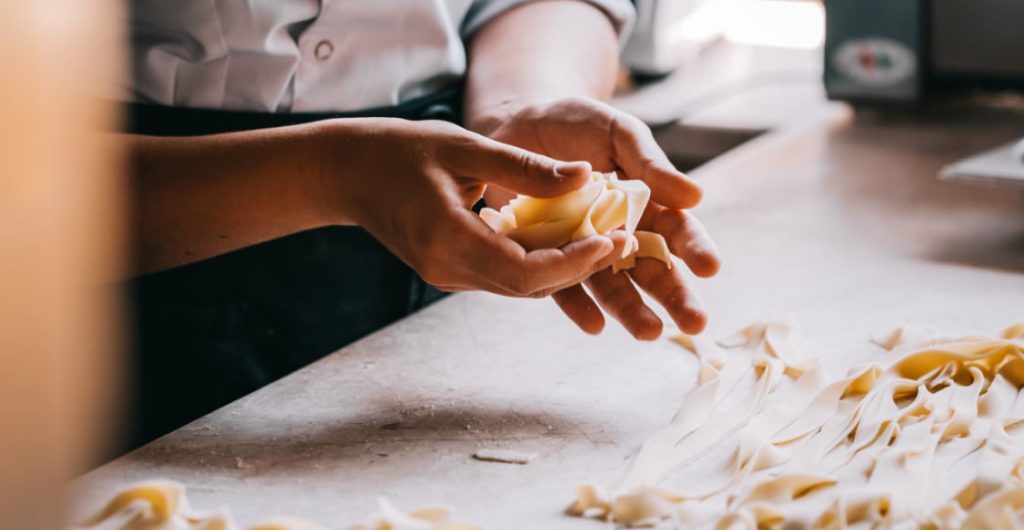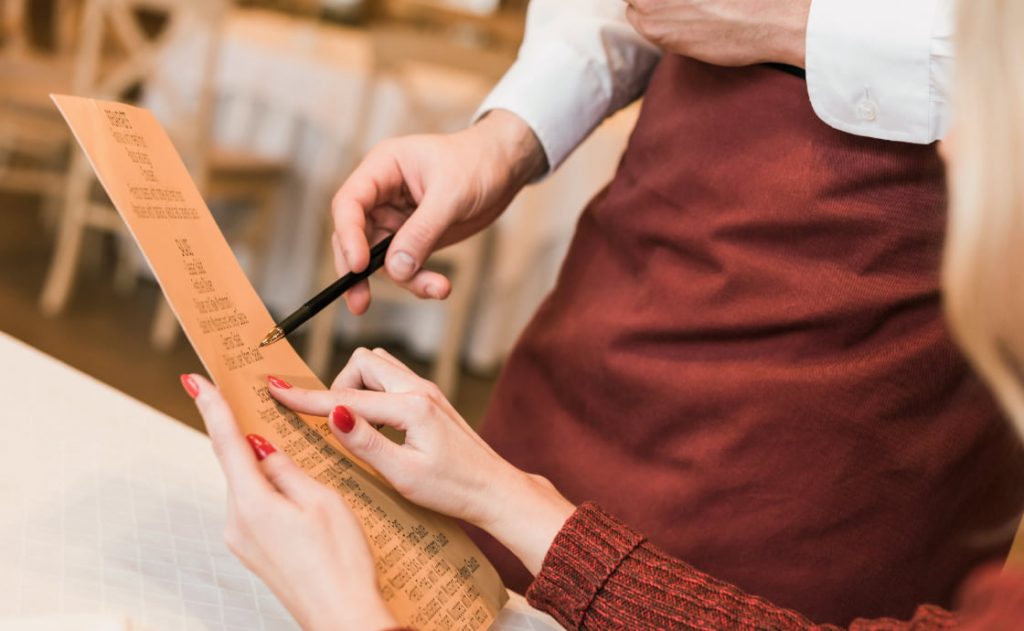Living Gluten-Free
Gluten-free Labelling

Gluten is one of the 14 food allergens that must be declared by law on food labelling in the EU.
When looking at a label, it is easy to identify allergens because they are emphasised in the ingredients list, for example using text in bold, so that they stand out from the other ingredients.
For example, if wheat has been used in the manufacture of a biscuit, this ingredient will appear in the ingredients list written in bold text.
Apart from the ingredients intentionally used to manufacture a product, allergens can be present as traces. What does this mean?
Traces are tiny amounts of an allergen that can be present in a food due to an unintended and/or unavoidable contamination.
Manufacturers voluntarily use precautionary allergen labelling to warn about this posible presence of traces in the product.
This warning is placed next to the ingredient list, in the form of statements such as “May contain…”.
On gluten-free packaged food, we can also find a labelling symbol that indicates the product is free from gluten.
In Europe, you may see an European certification that is represented as a symbol of a crossed ear of wheat.
Cross-Contamination

- Store gluten-free foods separately.
The best option is to keep gluten-free items on the top shelf of your pantry to prevent crumbs of gluten-containing items from falling into gluten-free foods. - ¡Store gluten-free foods separately.
The best option is to keep gluten-free items on the top shelf of your pantry to prevent crumbs of gluten-containing items from falling into gluten-free foods. - Gluten-free food should be cooked first, then set aside before gluten-containing food is handled.
- Shared products can be a source of cross-contamination. Be cautious of condiments, jam and butter – other people might have put a knife or spoon with gluten crumbs into the pot.
- Invest in new non-wooden spoons and chopping boards as wood can harbour traces of gluten from the past.
Dedicated gluten-free pots and metal utensils are not needed but make sure to cleanin them properly if they have been in contact with gluten-containing food.
- ¡Store gluten-free foods separately.
- Do not reuse oil that was used to fry gluten-containing food.
- Dish towels and aprons can hold particles of gluten and potentially could be another source of cross-contamination.
- Regarding countertop appliances, it is recommended to use a separate toaster or waffle iron for gluten-free items to avoid cross-contact with gluten-containing foods. It is not necessary to use a dedicated gluten-free oven, however make sure to clean it carefully before cooking a gluten-free meal.
- When sitting at the table, avoid sharing utensils and, if possible, sit at a distance from bread or other gluten-containing foods to prevent crumbs from falling in your plate.
Eating Out
Eating out can be a challenge when following a gluten-free diet.
Since we will not be the ones cooking our own food, it is important to make sure that the meal we are served is completely free of gluten.
This can be even more difficult when dining at a relative´s or a friend´s house, since they probably are uneducated about cross-contamination in the kitchen.
At restaurants, we can view the menu and look for the gluten-free options offered, usually they are marked with a gluten-free symbol.
We can also ask the staff about allergen information, although not all establishments have the necessary knowledge about coeliac disease and cross-contamination.
How to make sure a restaurant is prepared to offer gluten-free meals?

Choosing a Restaurant
The main challenge for people that have coeliac disease is finding a restaurant that offers gluten-free options and has a staff properly trained on how to avoid cross-contamination. You should check whether restaurants guarantee a coeliac friendly service or if there is risk of cross contamination.
If you know which restaurant you will be going to, try to research ahead of time. It may be worthwhile giving the restaurant a call before choosing.
Nowadays, technology can help and make things easier. There are multiple gluten-free restaurant apps and sites that specialize in gluten-free dining. For example, coeliac disease associations usually post a list of restaurants on their website. Popular websites often offer allergen menus online for you to check before booking. We can find a lot of information online on coeliac associations websites, specialized websites, blogs, etc. However, be aware that restaurants that used to offer gluten free options might not be able to continue doing so straight after opening up. It’s always best to check if the information we read is correct by ringing the venue in advance.
Travelling
Following a gluten-free diet shouldn´t stop you from travelling. A little planning ahead of time will help make your trip enjoyable. Here are some useful tips:
- Do some research in order to find places where you might be able to eat. Make a list of restaurants/hotels that offer gluten-free meals in the cities you are going to visit.
You can also check the website or contact the coeliac disease associations of the region/country. - Plan your itinerary taking into account the first point on this list, and make sure the restaurants you listed are able to offer gluten-free meals by calling or sending an e-mail.
- When booking a hotel, mention you have coeliac disease and make sure they are prepared to offer gluten-free options.
- If you have a long flight with a meal option, talk to the airline ahead of time to inform them of your dietary restrictions and confirm with them when checking in to ensure the meal will be on-board for you. In case you aren’t able to get a gluten free in-flight meal, pack some extra snacks.
- If you are travelling abroad, it is important to know how to say some key words such as “gluten-free”, “coeliac disease” or “traces” in the local language. You can also use gluten-free translation cards available on different websites, they are very helpful in explaining in other languages what foods need to be avoided in order to keep you safe.
- Always make sure you pack emergency snacks in case of delays, cancellations or other situations during the trip. The best option is to pack gluten-free snacks that don´t need to be refrigerated.
- Breakfast buffets can be a point of cross-contamination because guests serve themselves (they can drop crumbs of bread or use the same tools to serve gluten-containing items and gluten-free food, etc.). In this kind of situation, the best option is talking to a staff member about the food options and ask if they can serve you a dish straight from the kitchen to make sure it is gluten-free.
- The Internet can be a good source of information. coeliac Disease Associations and local bloggers can be a big help in navigating the gluten-free diet where you will be traveling. Gluten-free bloggers exist in nearly every country and they have already done the foot-work of finding safe places to eat. For this reason, blogs written by gluten-free travellers are an excellent source of information. Nevertheless, it is always best to check directly with the restaurants/hotels if the information we read is right.
- Some travel companies provide customized itineraries suitable for people with coeliac disease, including hotels and restaurants.
- Click on this link to see a list of international coeliac disease. associations.
Kids & Family

When a child is diagnosed with coeliac disease, education is key in making parents feel more at ease and allow children with coeliac disease to live happy and productive lives.
Adults should be aware about which food items contain gluten and which ones are gluten-free, as well as learn how to prevent cross contamination while preparing food. You can read the “Cross Contamination” section for some tips.
Kids might find difficult to adapt to their new diet at first, but it is important to educate them so that they understand what coeliac disease is and why it’s important to eat gluten-free. There are plenty of learning materials online to help parents explain what coeliac disease is.
At home, parents can cook some gluten-free recipes with their kids to help them identify gluten-containing ingredients and understand how to avoid cross-contact.
This is a great way to have fun and teach them about their new diet.
At School
School is a very important step while adapting to a new gluten-free diet. Even if your child doesn´t eat at the school cafeteria, some other events that involve food may come up, such as celebrations, birthday parties or trips away from home.
If your child requires a gluten-free diet, it is important to make sure that their school is aware and educated.
School staff are key to creating a safe environment.
You may need to work closely with the teachers and make sure they understand terms such as traces or cross-contamination. In the case of toddlers, craft supplies and other materials (for example, modeling clay, finger paints, etc.) should be gluten-free, because they may inadvertenly consume it if they put their hands in their mouths.
It is important that kids following a gluten-free diet feel included. Coeliac disease shouldn´t be a problem, with simple substitutions and arrangements children with coeliac disease can participate in the same activities as their peers.
The role of the classroom teacher in supporting a child with coeliac disease is extremely important. Teachers can also organise activities related to coeliac disease and the gluten-free diet. This way classmates will have a little knowledge about it and may be able to understand the implications it has.
There are resources online that can help teachers to adapt to this new situation. For example, coeliac associations usually offer guides about coeliac disease and school.